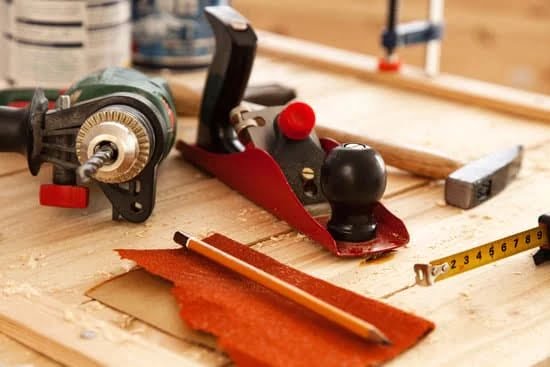Are you a woodworking enthusiast looking to invest in the right miter saw for your projects? Understanding what size miter saw for woodworking is crucial in achieving precision and efficiency in your tasks. Whether you are a beginner or seasoned woodworker, choosing the correct miter saw size can significantly impact the quality and outcome of your projects.
When it comes to woodworking, having the appropriate tools can make all the difference. In this article, we will delve into the different sizes of miter saws available and their specific uses in woodworking. From the 10-inch miter saw to the 12-inch and 7 – inch options, we will explore their features, capabilities, and limitations to help you make an informed decision when selecting a miter saw for your woodworking needs.
In addition to discussing the various sizes of miter saws, we will also consider important factors that should influence your choice, such as the type of woodworking projects you typically undertake, the size of materials you work with, and the level of precision required for your cuts. By addressing these considerations, we aim to provide valuable insights to assist you in selecting the most suitable miter saw for your specific woodworking tasks.
Types of Miter Saws
When it comes to woodworking, having the right tools can make all the difference in the quality and precision of your projects. One essential tool for any woodworker is a miter saw, which is designed to make accurate crosscuts and miter cuts at various angles. However, choosing the right size miter saw for your woodworking needs is crucial.
There are several types of miter saws available, each with its own specific uses and advantages. In this section, we will explore the different options available in terms of sizes and their specific uses in woodworking.
10-Inch Miter Saw
The 10-inch miter saw is a popular choice among woodworkers due to its versatility and compact size. It is suitable for cutting through most standard-sized lumber and molding, making it ideal for smaller woodworking projects such as crafting furniture, trim work, and framing.
The 10-inch miter saw is known for its precision and ease of use, making it a great option for beginners or hobbyists who are looking for a reliable tool that can handle a wide range of cutting tasks.
12-Inch Miter Saw
For larger and more complex woodworking projects, a 12-inch miter saw may be more suitable. This size offers greater cutting capacity and allows woodworkers to tackle thicker materials with ease. The 12-inch miter saw is perfect for heavy-duty tasks such as building decks, fences, or larger furniture pieces. Its larger blade size provides more power and efficiency when working with hardwoods or other dense materials.
7-Inch Miter Saw
On the other end of the spectrum, the 7-inch miter saw is smaller in size but offers its own set of benefits. This compact tool is lightweight and portable, making it an excellent choice for craftsmen who need a miter saw for on-site work or small-scale projects.
While it may not have the same cutting capacity as larger models, the 7-inch miter saw excels at making quick and precise cuts on thinner materials like trim pieces or small moldings.
Understanding the differences between these various sizes of miter saws can help woodworkers make an informed decision based on their specific needs and project requirements. When considering what size miter saw for woodworking tasks, it’s important to assess factors such as the type of woodworking projects you frequently undertake, the size of the materials you work with most often, and the level of precision required for your cuts.
By carefully evaluating these considerations, you can determine which size miter saw will best serve your individual needs as a woodworker.
Considerations for Choosing the Right Size Miter Saw
When it comes to choosing the right size miter saw for woodworking projects, there are several important factors to consider. The type of woodworking projects you typically work on will play a significant role in determining the size of the miter saw that would best suit your needs.
Additionally, the size of the materials you typically work with and the level of precision required for your projects will also influence your decision. Understanding these considerations will help you make an informed choice when selecting a miter saw for your woodworking tasks.
Type of Woodworking Projects
The type of woodworking projects you undertake will have a direct impact on the size of miter saw that is most appropriate for your needs. For smaller, more intricate projects such as crafting furniture or creating decorative items, a smaller miter saw like the 7-inch model may be sufficient. However, if you frequently work on larger projects such as building structures or cutting wide boards, a larger 12-inch miter saw may be more suitable.
Size of Materials
Another crucial factor to consider when choosing a miter saw is the size of the materials you typically work with. If you commonly need to cut larger pieces of wood or trim thicker stock, a bigger miter saw with a wider cutting capacity would be necessary. On the other hand, if your projects involve primarily smaller materials and fine detail work, a smaller miter saw might be adequate.
Level of Precision Required
The level of precision needed for your woodworking tasks is also an essential consideration when selecting the right size miter saw. If your projects demand highly accurate and clean cuts, especially for complex angles and detailed joinery, you may need a larger miter saw with more power and stability to achieve that precision. However, if precision is less critical for your particular woodworking needs, a smaller and more maneuverable miter saw might suffice.
Considering all these factors will help you determine what size miter saw for woodworking is best suited for your specific needs and requirements. By carefully evaluating the type of projects you work on, the size of the materials you handle, and the level of precision necessary, you can make an informed decision that will enhance both safety and efficiency in your woodworking endeavors.
10-Inch Miter Saw
When it comes to choosing the right size miter saw for woodworking, the 10-inch miter saw is a popular option that offers a good balance of power and portability. This size of miter saw is well-suited for a wide range of woodworking tasks, making it a versatile choice for both DIY enthusiasts and professional woodworkers.
The 10-inch miter saw is known for its ability to make accurate crosscuts, miter cuts, bevel cuts, and compound cuts on smaller to medium-sized materials, making it suitable for projects such as framing, trim work, and furniture making.
One of the advantages of the 10-inch miter saw is its compact size and lighter weight compared to larger models. This makes it easier to transport to different work sites and maneuver when making precise cuts. Additionally, the 10-inch blade can still handle most standard woodworking materials with ease, including lumber, hardwoods, and plywood, making it a practical choice for a variety of projects.
However, it’s important to consider the limitations of the 10-inch miter saw as well. While it can handle many woodworking tasks effectively, it may not be the best option for cutting larger or thicker materials due to its smaller blade size.
Therefore, when considering what size miter saw for woodworking projects that involve heavier or larger pieces of wood, a 12-inch miter saw may be more appropriate. Nonetheless, for general woodworking tasks and projects involving standard-sized materials, the 10-inch miter saw remains an excellent choice due to its versatility and ease of use.
12-Inch Miter Saw
When it comes to woodworking, choosing the right size miter saw is crucial for ensuring precision, efficiency, and safety in your projects. One of the popular options available is the 12-inch miter saw, which offers certain features and capabilities that make it suitable for specific woodworking tasks. Understanding the unique characteristics of this miter saw size can help woodworkers determine whether it aligns with their project needs.
The 12-inch miter saw is known for its larger cutting capacity compared to its smaller counterparts. With a bigger blade size, this type of miter saw allows users to work with wider and thicker materials, making it ideal for larger woodworking projects such as building decks, framing houses, or constructing furniture. The increased cutting capacity also means that woodworkers can make bevel cuts and compound cuts with ease, providing greater flexibility in their designs.
In addition to its cutting capabilities, the 12-inch miter saw often comes with more powerful motors, allowing for smoother and more efficient cutting through tough hardwoods. This added power makes it suitable for professional woodworkers or those working on heavy-duty projects that require consistent and precise cuts.
However, it’s important to note that the larger size and increased power of the 12-inch miter saw also make it bulkier and heavier than some other options, which could be a downside for users who prioritize portability.
| 12-Inch Miter Saw Features | Benefits |
|---|---|
| Larger cutting capacity | Ideal for wider and thicker materials; suitable for larger projects |
| More powerful motor | Efficient cutting through tough hardwoods; suitable for heavy-duty projects |
| Bulky and heavy | Potential downside in terms of portability |
7 ¼-Inch Miter Saw
A 7-inch miter saw is a compact and versatile tool that is ideal for a variety of woodworking tasks. Its smaller size makes it easy to maneuver and handle, making it perfect for DIY enthusiasts and hobbyists. The 7-inch miter saw is particularly well-suited for smaller woodworking projects such as picture framing, small furniture pieces, and trim work. Its size allows for precise cuts on narrow pieces of wood, making it a valuable tool for detailed work.
Despite its many advantages, the 7-inch miter saw does have some limitations. One of the main drawbacks of this size is its limited cutting capacity compared to larger miter saws. While it excels at handling smaller stock, it may struggle with larger and thicker pieces of wood. Additionally, the 7-inch blade may not be suitable for certain types of cuts required for larger woodworking projects.
When deciding what size miter saw for woodworking projects, it’s important to consider the specific tasks you will be undertaking. If you primarily work on smaller projects that require detailed and precise cuts, then a 7-inch miter saw may be the ideal choice. However, if you frequently work with larger materials or need a saw with a greater cutting capacity, you may want to consider a larger miter saw such as the 10 or 12-inch models.
| Pros | Cons |
|---|---|
| Compact and easy to maneuver | Limited cutting capacity |
| Precise cuts on narrow pieces of wood | May struggle with larger and thicker pieces of wood |
| Ideal for small woodworking projects | Some types of cuts required for larger woodworking projects |
Comparing the Different Sizes
When it comes to woodworking, choosing the right size miter saw can make a significant difference in the outcome of your projects. There are various options available, each with its own set of features and capabilities. In this section, we will compare three popular sizes of miter saws: the 10-inch, 12-inch, and 7 – inch miter saws, in terms of power, cutting capacity, and versatility.
The 10-inch miter saw is a versatile option that offers a good balance between portability and cutting capacity. It is suitable for cutting smaller-sized boards and moldings, making it ideal for DIY projects or smaller woodworking tasks. The compact size of the 10-inch miter saw makes it easy to maneuver and transport, which can be advantageous for those working in limited space or on job sites.
Moving on to the 12-inch miter saw, this size offers increased cutting capacity and power compared to its 10-inch counterpart. With its larger blade, the 12-inch miter saw is capable of cutting through thicker and wider stock, making it suitable for more substantial woodworking projects such as framing or deck building.
However, it is worth considering that the larger size of the 12-inch miter saw also means it takes up more space and may not be as portable as the 10-inch version.
Finally, the 7 – inch miter saw is known for its compact size and lightweight design. While it may not have the same cutting capacity as the larger models, it is perfect for precision work and fine detail cuts. The smaller blade size makes this miter saw highly maneuverable and well-suited for intricate trim work or delicate projects where accuracy is paramount.
Conclusion
In conclusion, choosing the right size miter saw for woodworking is crucial in ensuring the success and efficiency of your projects. The type of woodworking tasks, the size of materials, and the level of precision required are all important factors to consider when determining the best miter saw for your needs. Each size – 10-inch, 12-inch, and 7 – inch miter saw – has its own strengths and limitations, making it essential to evaluate your specific requirements before making a decision.
When considering what size miter saw for woodworking, it’s important to take into account the cutting capacity, power, and versatility of each option. The 10-inch miter saw is known for its portability and affordability, making it suitable for DIY enthusiasts and hobbyists working on smaller projects.
On the other hand, the 12-inch miter saw offers greater cutting capacity and flexibility, making it ideal for professional woodworkers handling larger materials and more complex projects. The 7 – inch miter saw may be limited in terms of cutting capacity but is perfect for trim work and detailed tasks that require precision.
Ultimately, the best size miter saw for woodworking tasks depends on your specific needs and requirements. Consider the types of projects you will be working on most frequently, as well as the sizes of materials you will be using.
Evaluate your workspace and storage capabilities to ensure that your chosen miter saw will be practical in your working environment. By carefully considering these factors, you can make an informed decision on what size miter saw is best suited for your woodworking endeavors.
Frequently Asked Questions
How Big of a Miter Saw Do I Need?
The size of miter saw you need depends on the specific projects you will be working on. For general DIY and home improvement tasks, a 10-inch miter saw is usually sufficient. However, if you anticipate working with larger materials or tackling more substantial projects, a 12-inch miter saw might be more suitable.
Is a 10 or 12-Inch Miter Saw Better?
Both 10 and 12-inch miter saws have their own advantages. A 10-inch miter saw is generally lighter and more affordable, making it a good choice for beginners or those with limited workspace.
On the other hand, a 12-inch miter saw can handle wider and thicker materials, making it ideal for professional carpenters or those who frequently work with larger stock.
How Thick of Wood Can a 10 Inch Miter Saw Cut?
A 10-inch miter saw can typically cut through wood that is around 5 inches thick. However, the actual cutting capacity may vary depending on the specific model and brand of the miter saw. It’s important to check the manufacturer’s specifications to ensure that the saw meets your particular cutting needs.

Hi everyone! I’m a woodworker and blogger, and this is my woodworking blog. In my blog, I share tips and tricks for woodworkers of all skill levels, as well as project ideas that you can try yourself.





